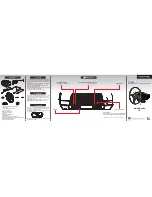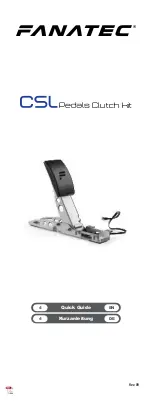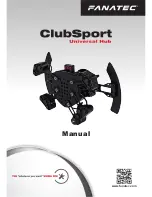
7
COMUNELLO
®Copyright 2019 - All rights reserved
DIP-SWITCH no. 4: Filter Option.
This option is used to provide a delay of 2 Seconds between detection of the
vehicle and switching of the output relay.
This delay is normally used to prevent false detection of small or fast moving
objects.
DIP-SWITCH no.3: Permanent Presence Option.
This feature ensures detection of the vehicle will be maintained when the
vehicle is parked over the loop for extended periods.
Selectable
Extend
Time.
When switched on this feature extends the outputs for 2 Seconds.
DIP-SWITCH n° 2: Pulse Relay Selection.
The Pulse relay may be configured to energise on detection of a vehicle or
when the vehicle leaves the loop.
DIP-SWITCH n° 1: Selectable Pulse Time.
This feature sets the length of time that the pulse relay will be energised for. 1
Second or 0.2 Second.
Loop Fault Indicator:
This LED Indicator is illuminated when the loop is either open circuit or short
circuit and is used to give a visual indication of a faulty loop.
TECHNICAL DATA:
A
limentation AC-240
200-260VAC (+/- 15%) 50Hz
Presence/pulse relay:
0,5 A / 220 VAC
Indicator:
LED indicators show: Power ,Detect state
and Loop Fault.
Detector tuning range:
15-1500uH
Protection:
Loop isolation transformer with lightning
protection.
Connector:
11 Pin Connector on rear of unit.
10
WIRING DIAGRAM
1
230 VAC PULSE
RELAY
PRESENCE
RELAY
COPPER
COIL
2
F N
3 4 5 6 7 8 9 1011
11
INSTALLATION GUIDE
The detector should be installed in a waterproof housing as close to the loop
as
possible.
The loop and feeder should be made from insulated copper wire with a
minimum cross-sectional area of 1.5mm2. The feeder should be twisted with
at least 20 turns per metre. Joints in the wire are not recommended and
must be soldered and made waterproof. Faulty joints could lead to incorrect
operation of the detector. Feeders which may pick up electrical noise should
use screened cable, with the screen earthed at the detector.
The loop should be either square or rectangular in shape with a minimum
distance of 1 metre between opposite sides. Normally 3 turns of wire are
used in the loop. Large loops with a circumference of greater than 10 metres
should use 2 turns while small loops with a circumference of less than 6
metres should use 4 turns. When two loops are used in close proximity to
each other it is recommended that 3 turns are used in one and 4 turns in the
other to prevent cross-talk.
Cross-talk is a term used to describe the interference between two adjacent
loops. To avoid incorrect operation of the detector, the loops should be at
least 2 metres apart and on different frequency settings.
For loop installation, slots should be cut in the road using a masonry cutting
tool. A 45o cut should be made across the corners to prevent damage to
the wire on the corners. The slot should be about 4mm wide and 30mm to
50mm deep. Remember to extend the slot from one of the corners to the
road-side to accommodate the feeder.
Best results are obtained when a single length of wire is used with no joints.
This may be achieved by running the wire from the detector to the loop,
around the loop for 3 turns and then back to the detector.
The feeder portion of the wire is then twisted. Remember that twisting the
feeder will shorten its length, so ensure a long enough feeder wire is used.
After the loop and feeder wires have been placed in the slot, the slot is filled
with an epoxy compound or bitumen filler.
300mm
300mm
1M
45
O
TRAFFIC DIRECTION
4mm
EPOXYDE RESIN OR BITUMEN
30-50 mm






















